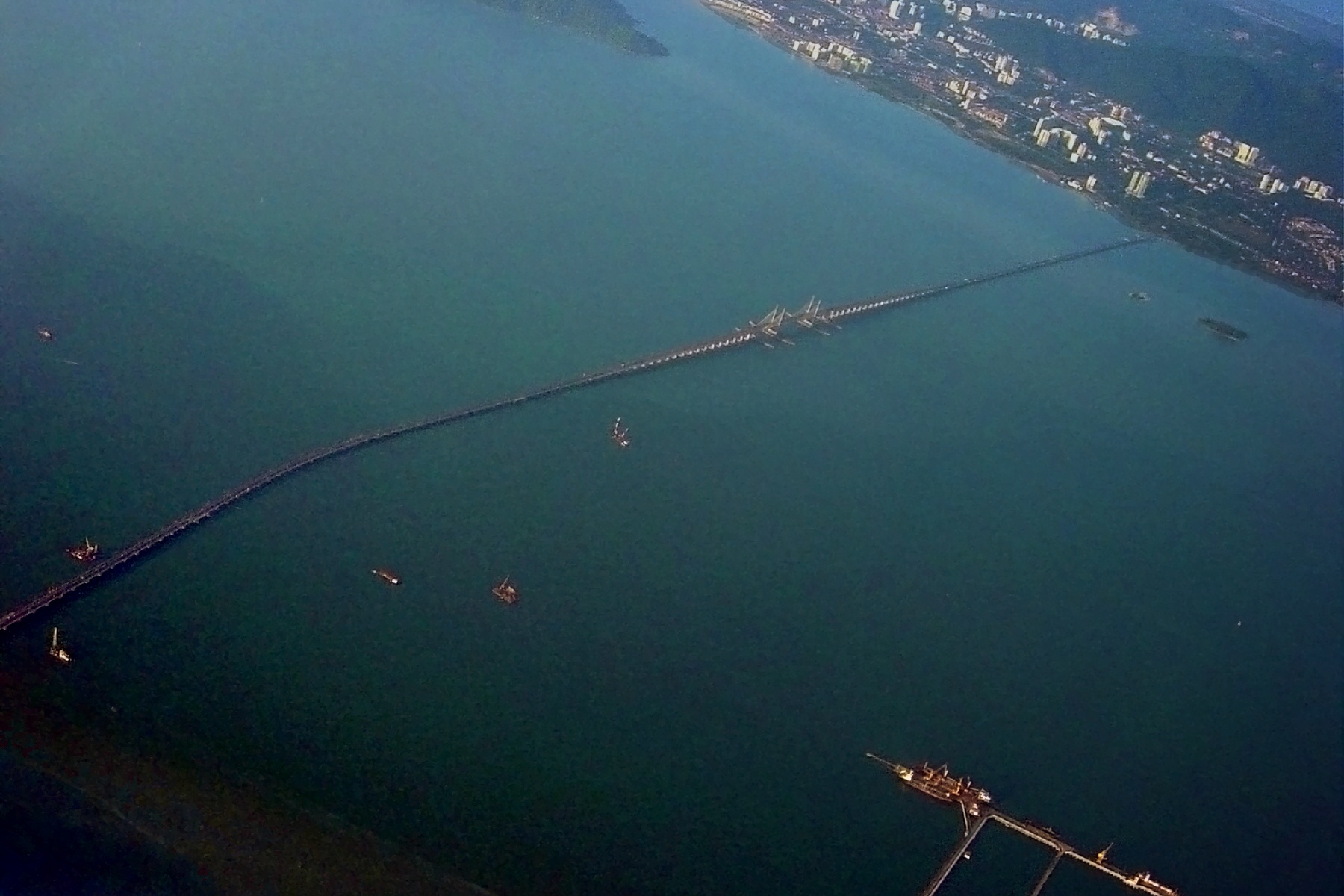
Uploaded on 2014-11-12 by stuartmacdonald
Both of these bridges are for cars only, and currently no land based public transportation links the island with the mainland. The only public transport connection is the Penang ferry, the oldest ferry service in Malaysia, which started operation in 1920, however this is largely geared to transporting vehicles with no pedestrian only service. The ferry service has been in gradual decline since the first bridge opened in 1985 and motor vehicle transportation has come to dominate. At its peak in 1984 over 11 million foot passengers used the ferry each year. Between 1985 and 2003 this activity has decreased to less than 20 percent of its peak, reflecting the impact that Penang Bridge has had on the motorisation of Island - Mainland travel. In 1973 the ferry was used by over 500,000 cyclists, today this figure is a miniscule 14,000 trips per year which indicates the falling popularity of the bicycle as a form of transport. Between the year 2000 and 2010 the number of motorcycles registered in Penang increased by 40% and motor cars increased by 57%, while the population increased by just 20%. ![Penang Bridge, Wikimedia Commons, licensed for reuse][1] The patterns of urbanisation on the island are dominated by this transportation infrastructure and the urban form has been significantly been built around this private motor vehicle dependence making the process of shifting to an efficient public transportation system all the more difficult. As congestion on the island has increased, one way systems have been introduced and new roads are planned. Public transport currently accounts for around 2% of all journeys, and continued dependence of private vehicles, increasing vehicle ownership and rising cost of fuel over the longer term make this unsustainable, especially for a small island. As the urban form has been shaped by private transportation the pedestrian realm is underdeveloped, there is a lack of attention to walking as a mode of transport, road crossings are lacking, pavement infrastructure is ad hoc, which makes utilising the existing bus network more difficult. Therefore it is crucial that investment in new transport infrastructure balances the need of private travel with the crucial dimensions for the design of a future sustainable urban system and human habitat. While a paradigm shift is required in considering how to provide a more efficient transportation system on a highly urbanised small island, simultaneous processes will be required to redevelop the entire public realm in a pedestrian friendly way that can facilitate public transportation. An at grade tram system is proposed, but so are 5 more roads and a tunnel to the mainland (with no rail line or dedicated bus lane). [1]: http://upload.wikimedia.org/wikipedia/commons/b/bd/Penang_Bridge_IV.jpg